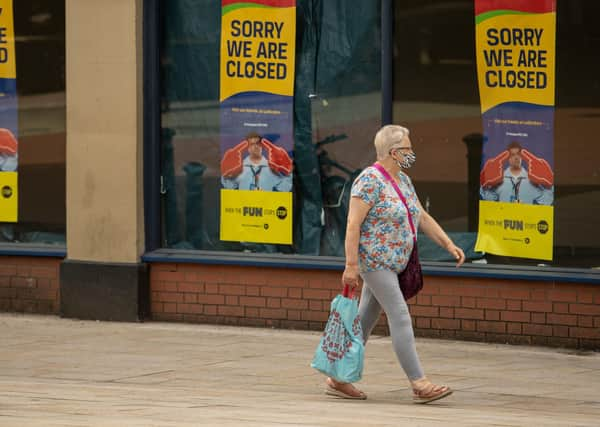How simple policy fixes can revive Yorkshire’s ailing high streets: Jethro Elsden


But in truth traditional retail has been in trouble long before the pandemic hit. Since the turn of the millennium online retail has steadily grown, hitting traditional retailers and feeding into higher retail vacancy rates.
In 2005 retail had the lowest vacancy rate across all types of commercial space, by 2015 it had the highest rate and the situation has only worsened since then – many towns and cities have seen their high streets become pockmarked with empty shops and stores, each vacant property sucking a little bit of the soul out of the place. The pandemic has only accelerated these trends.
Advertisement
Hide AdAdvertisement
Hide AdIt’s in the red wall and those areas usually singled out for the focus of the levelling up agenda where the issue of rising vacancy rates is most acute – the top three regions by vacancy rate are the North East, the North West, and Yorkshire Yet these are also the three regions where the Conservatives made the largest proportionate gains in the 2019 election.


As we argue in a new Centre for Policy Studies report, this issue isn’t just important economically, but also politically. Rejuvenating high streets will be a key way that voters decide whether the Governments ‘levelling up’ agenda is working or not.
They are key to how people view their local areas, with seven in 10 saying they judge a town by the state of its high street. Not acting swiftly to regenerate them comes with big political risks.
So, if we are to fulfil Boris Johnson’s promise of ‘building back better’, what should the Government do? One priority is freeing up businesses to repurpose and recycle commercial space into other uses. The Government’s recent Class E use changes have helped a lot in that regard, but there are still many barriers.
Advertisement
Hide AdAdvertisement
Hide AdFor example, many minor changes such as adding in an extra entrance or exit are currently covered under the planning system which means it is costly and time-consuming to carry them out. The Government should bring such non-nuisance alterations out of the planning system and into the permitted development framework.


But more fundamentally, it’s about councils not getting in the way of necessary changes to commercial space in their area. That’s why we argue that the first part of each council’s new local plan should be an accurate assessment of how much commercial space their area actually needs, something they are often unenthusiastic about doing because losing commercial space means losing business rates revenue.
Councils that fail to do this by the end of 2022 should have a plan drawn up for them by central government, whereas councils which draw up a plan on time should be rewarded and gain access to an Environment Improvement Fund for aesthetic and other changes to help rejuvenate commercial areas.
In order to make sure councils face the right incentives, the Business Rates system needs reform. At the moment councils get to retain a certain amount of local business rates revenue based on the total commercial space in their area, even if that space is lying vacant.
Advertisement
Hide AdAdvertisement
Hide AdThis creates a situation whereby if the council were to allow vacant shops to be converted into homes, then they would lose out. Understandably, given that commercial property is taxed at seven times the rate of residential property, they often prefer to have empty commercial space than new housing.
So, the retention system needs changing – vacant commercial property should be subtracted from the total so councils no longer lose out when commercial space is recycled into residential. Fixing this incentive could have a transformational impact on brownfield development.
Even before the pandemic it was estimated that up to 40 per cent of retail space was surplus to requirements, enough for more than half a million new dwellings.
As with other areas of the economy and country, we can definitely build back better, but only if policy changes so that councils face the right incentives and firms are freed to reshape commercial spaces and high streets for the demands of today not leave them stuck in the past, gradually decaying.
Advertisement
Hide AdAdvertisement
Hide AdJethro Elsden is the senior data analyst and researcher at the Centre for Policy Studies.
Support The Yorkshire Post and become a subscriber today. Your subscription will help us to continue to bring quality news to the people of Yorkshire. In return, you’ll see fewer ads on site, get free access to our app and receive exclusive members-only offers. Click here to subscribe.
Comment Guidelines
National World encourages reader discussion on our stories. User feedback, insights and back-and-forth exchanges add a rich layer of context to reporting. Please review our Community Guidelines before commenting.